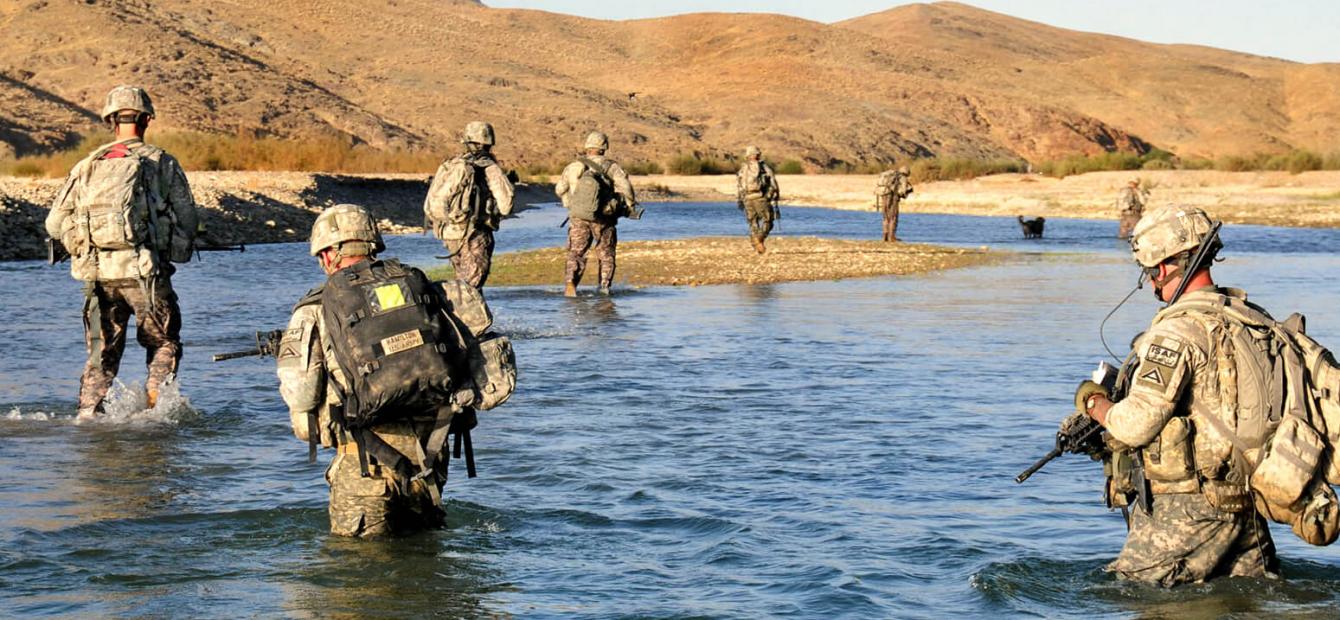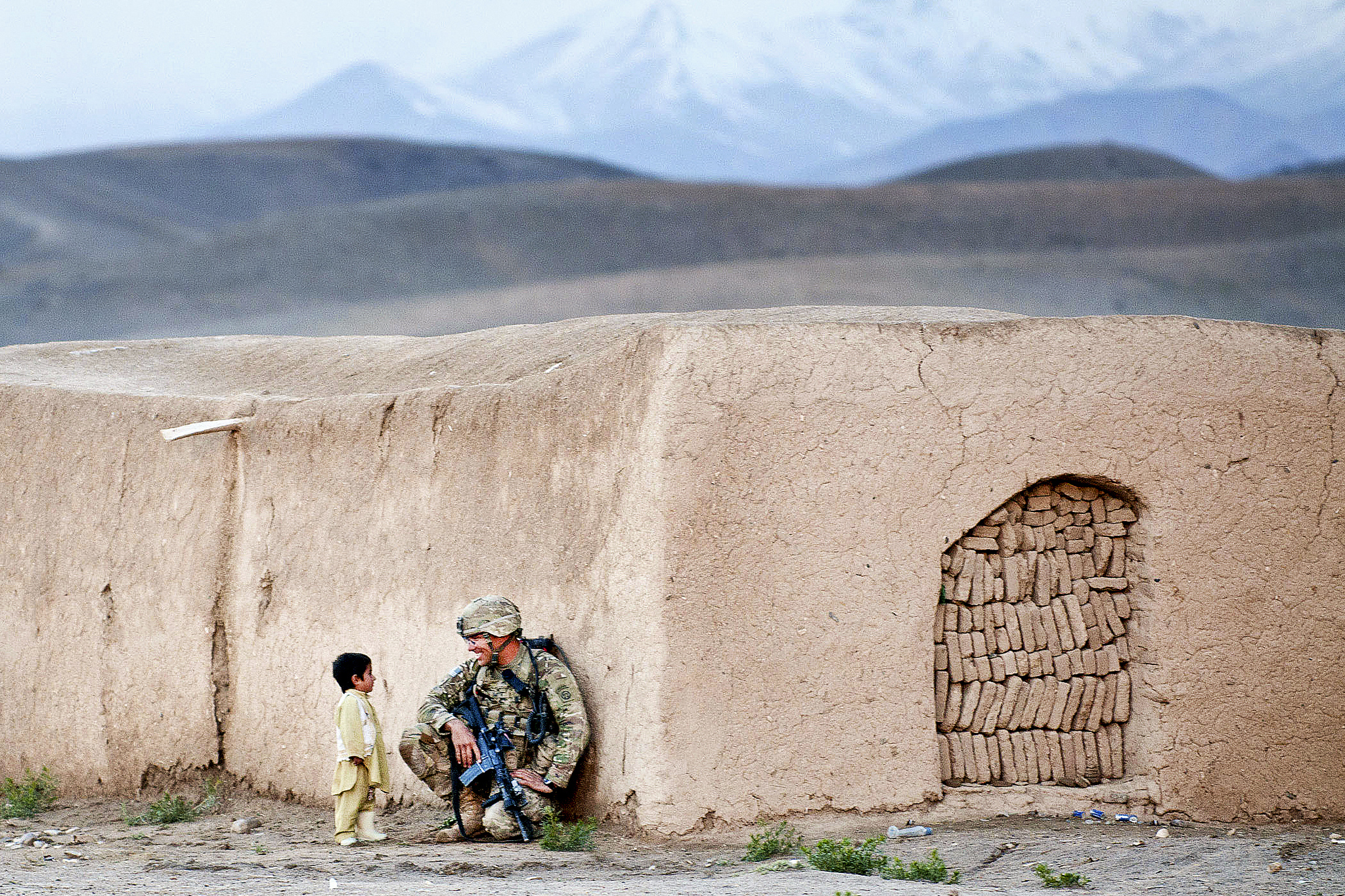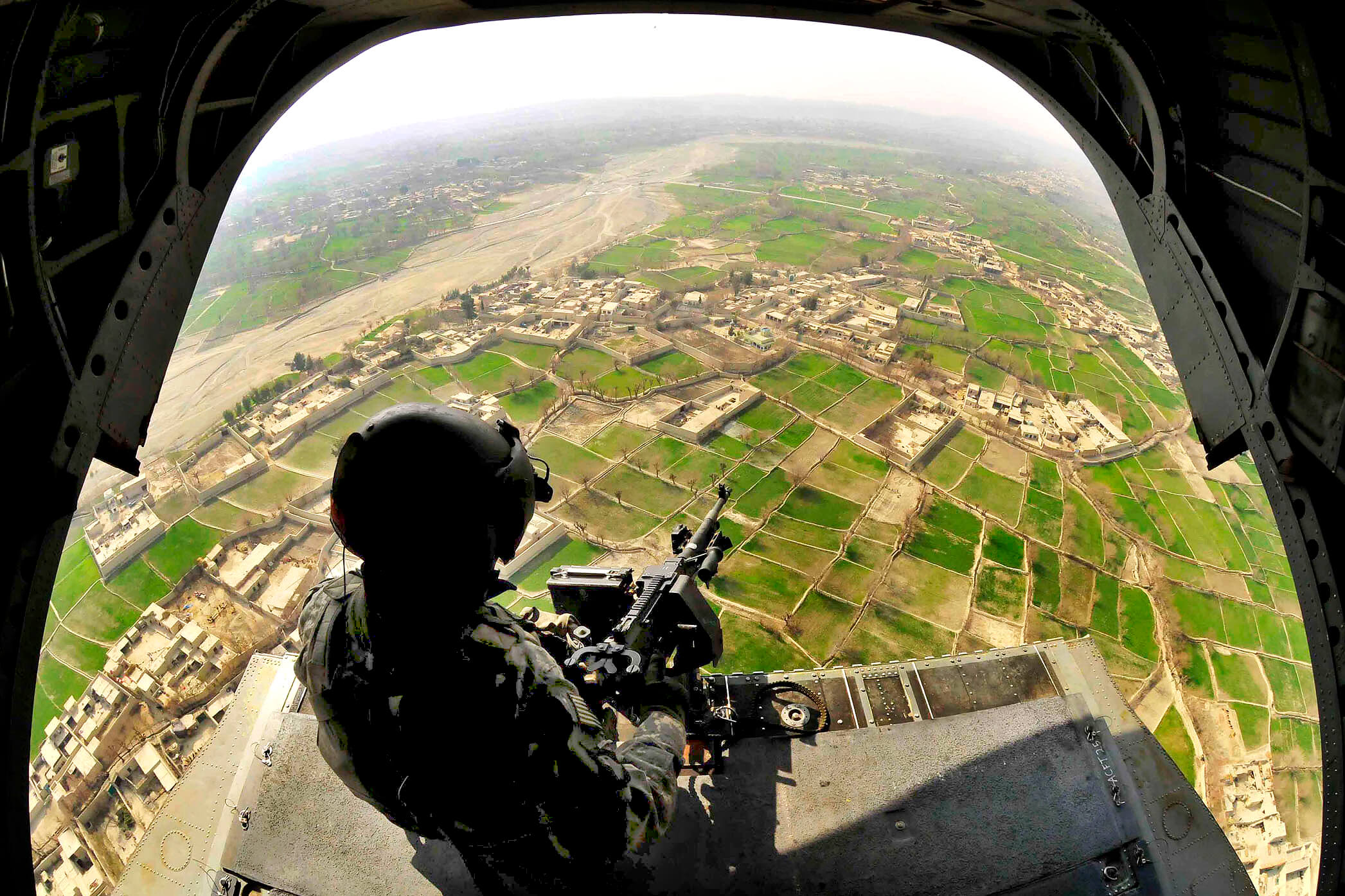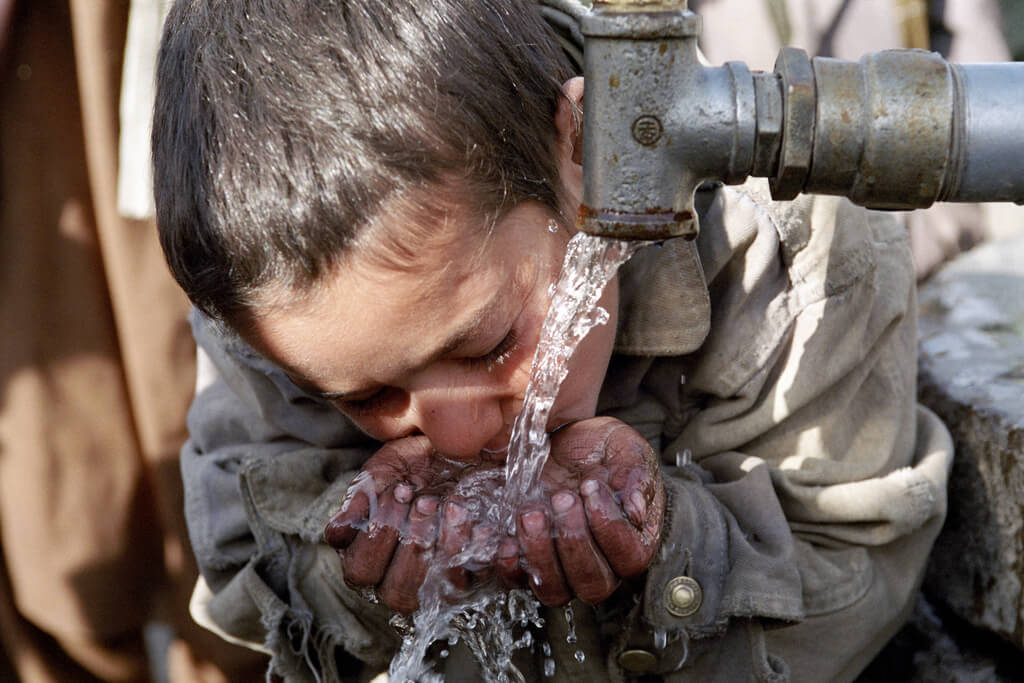
The hand-and-water Tale: Options for the West in Afghanistan
Clingendael-fellow Jorrit Kamminga revisits the ‘should we stay or should we go’ debate related to the West’s presence in Afghanistan. Whether we will remove our presence (‘the hand’) entirely or keep some ‘fingers’ in the water, the future of Afghanistan will be determined by the clash between the positive and negative elements that have come to the surface. That future is difficult to predict and may be highly unstable, but it will not see a Taliban regime like the one of the 1990s.
Afghanistan might be a (small) step closer to a formal peace process. In February, the Taliban published1 an open letter calling on the United States to push for negotiations. At the end of that month, president Ghani presented2 an ambitious peace plan, which included an unconditional offer to start talks, to recognize the Taliban as a legitimate political party and to remove Taliban commanders from international blacklists. It is telling that the Taliban is not being forced to the negotiation table out of a position of weakness, which has been the objective of the West’s ongoing support for counter-insurgency in Afghanistan. Instead, both the Taliban’s communication on peace negotiations and the Afghan government’s peace plan seem motivated by the Taliban’s position of strength.
What future for the Taliban?
According to various news reports3
, the writing has been on the wall for many years: The Taliban will slowly but steadily retake4
control of Afghanistan. In 2017, the US Special Inspector General for Afghanistan Reconstruction (SIGAR) reported5
that 43 percent of Afghanistan’s districts were either under Taliban control or being contested. According6
to the Long War Journal, this is currently either 40 or 47 percent, depending on whether you also calculate the unverifiable claims of the Taliban. In January 2018, a BBC study even found7
that the Taliban were openly active in 70 percent of the country.

If the return of the Taliban would indeed be imminent, the image US former Under Secretary of Defense for Policy Michèle Flournoy, conjured up in Foreign Policy8 in 2013, seems to be accurate: “(…) it is like taking your hand out of the water. Once you leave, you’re right back in the exact same situation (…).” The costs of maintaining that hand in the water are huge, but would it be all in vain once it is removed? No. The starting situation of the Taliban regime (the second half of the 1990s) can never come back, regardless of whether peace negotiations will succeed or whether the Taliban could win this war. There are two main reasons for that.
No single Taliban
Firstly, there is no single ‘Taliban’, but rather a loose configuration of different groups whose interests sometimes align but are often at odds with each other. These groups may share a common national agenda, but their core interests and power base often depend on local dynamics. The emergence of Islamic State since 2014, in part consisting of9
former members of the (Pakistani) Taliban, shows how new groups are formed, depending on changing dynamics and shifting alliances, and then compete with other groups for control over territory, trade routes and illegal markets. The latest example is the switch of allegiance10
to Islamic State of two Taliban commanders in Jowzjan province in northern Afghanistan.
The backward, conservative nature of the Taliban of the 1990s is a relic from the past. It has no place in modern day Afghanistan
If the government collapses11 (which in any case would only happen if the ‘hand’ of international support is completely out of the water), Afghanistan will therefore not represent a cohesive ‘Taliban regime’ in control of 90 percent of the country, but rather a decentralized, fluctuating power mosaic of local warlords and other power holders. Some will wave the Taliban flag, but others will not. Some might rally behind global movements such as Islamic State, but others will have a more domestic agenda. Even if one Taliban group would retake Kabul as an administrative centre, it would confront the same structural challenges impeding effective state control the current government faces.
Not all progress is reversible
Secondly, the (rehabilitated) regional power centres would not be able to completely turn back the tide of progress. Strict forms of law enforcement and justice may temporarily again be popular, similar to when the Taliban arose in the 1990s, but they are not sustainable, especially when faced with an Afghan population that is now far more educated, connected and informed. Peter Bergen described 12
in Foreign Policy some of the structural changes Afghanistan has witnessed since 2001, particularly in terms of life expectancy, access to healthcare and education, urban development and even good governance.

The backward, conservative nature of the Taliban of the 1990s, hanging television sets in trees and outlawing most forms of music and entertainment, is a relic from the past. It has no place in modern day Afghanistan, even though large areas of the country are still highly conservative. The various Taliban groups seem to acknowledge that fact, by factoring in the needs of the people living in their areas when determining their strategy and outreach to humanitarian agencies. The Taliban has changed13 in parallel to changing conditions in Afghanistan. While their deadly attacks14 on civilians in Kabul still discredit any serious move towards full respect for human rights, even the Taliban groups know that such a strategy is unsustainable in the long run, unless they want to run a country without people.
Using Flournoy’s metaphor, there are roughly three options for the West in the current context.
Option 1: Keeping the hand where it is
Keeping things as they are will unlikely produce a solution to the current impasse. On the battlefield, there is already a tactical stalemate15
. While the influence of ‘the Taliban’ seems to be increasing, it is still unlikely they will be able to fully control the five regional centres of Afghanistan. If the West keeps supporting the Afghan security forces in combat – particularly when needed with special forces, an international air force and drone attacks – it is likely this stalemate will continue forever. That scenario would only be beneficial if the inability of either side to achieve victory would drive the parties involved in this conflict to formal peace negotiations and reconciliation.
However, we have so far seen little evidence that the military conflict is able to play this political catalyst role, not even when the insurgent groups were far weaker than they currently are. While NATO’s Secretary General Stoltenberg argues16 that the “Taliban has to understand that they will never win on the battlefield, so they have to come to the negotiating table and agree to a political solution,” this remains rather wishful thinking at the moment. One open letter from the Taliban and a unilateral peace plan will not immediately change that.
Option 2: Removing the hand from the water
The second option is to remove the hand from the water completely. Militarily, that will eventually be the only option, but it should be done in a responsible way and not solely motivated by domestic political considerations in capitals of those nations supporting NATO’s Resolute Support Mission in Afghanistan. Some training of Afghan security forces can continue in the future, but the longer we do that in the form of a fully-fledged NATO mission, the longer insurgent groups have a strong argument not to seek out peace negotiations, while the Afghan government will appear weak and dependent. For the moment, the Taliban keeps insisting17
they will continue to fight as long as there are foreign troops in the country.
Removing simultaneously the civilian and military hand from Afghanistan will confirm that a) we did not learn from history; and b) we were never serious about our post-9/11 pledge that Afghanistan would never again be a safe haven for terrorists, a promise reconfirmed18 by President Trump in January 2018.
The investment and sacrifices of more than 50 countries over the past 17 years in Afghanistan have simply created too much vested interest
What would happen if we removed the hand anyway? We would see that the water level has risen considerably since 2001, and that there are all sorts of new elements floating about. Some are buoys that will keep Afghanistan afloat such as the growth of the private sector, the young generation that is more educated than ever before, the huge increase in access to healthcare or the new roles and responsibilities that women have taken up in Afghan society. But other elements are dangerous icebergs, such as the massively grown illegal opium economy, the rise of extremism, persisting poverty, increased corruption and the human tragedy of millions of displaced and returnees across the country.
Option 3: Keeping civilian fingers in the water
That brings us to a third option: keeping the civilian ‘fingerprint’ in the water. It is unlikely that the international community will ever completely remove the hand from the water. Even after all the international combat troops have been withdrawn – something inevitable soon – there will still be assistance for many years to come in the form of humanitarian aid, development cooperation, capacity building and the upkeep and salaries of Afghan security forces. The investment and sacrifices of more than 50 countries over the past 17 years have simply created too much vested interest.

The scale of our involvement will be different, but we will never truly leave. In a way, that means returning to the situation before the 1990s when Western aid organizations and donor countries had already been active in Afghanistan for many decades. There is, however, one important difference: More than ever before, we have learned that a) nation building is a bridge too far in Afghanistan 19 ; and b) state building will take many decades and will require a heavy civilian fingerprint. Nonetheless, keeping civilian fingers in the water is useful, especially if these are directed more and more into a hugely neglected area: reconciliation and peacebuilding. The small window for peace negotiations that currently exists, provides yet another reason for redirecting part of civilian efforts towards peace and reconciliation.
Conclusion
Whether we will remove the hand entirely or keep some fingers in the water, it is the clash between the positive and negative elements that have come to the surface in recent years that will determine the future of Afghanistan. That future is difficult to predict and may be highly unstable, but it will not see a Taliban regime like the one of the 1990s.
That does not mean the West will continue to dictate the path of development in Afghanistan. Quite the contrary in fact. It is probable that the most stable outcomes in the coming years will be those that are really carried by Afghans and better reflect the Afghan reality of a divided nation and a decentralized system of regional power centres and local strongmen. The West may not like these outcomes and some of them may come about with quite some bloodshed. But the longer we continue to ignore Afghan reality and the limits of both nation and state building, the longer we will keep investing in an empty shell of democracy and a political pipe dream.
- 1The Guardian, Taliban publishes letter calling US to start Afghan peace talks, 14 February 2018.
- 2VOAnews, Ghani offers unconditional peace talks, legitimacy to Afghan Taliban, 28 February, 2018.
- 3The Guardian, The war America can't win: how the Taliban are regaining control in Afghanistan, 3 August, 2017.
- 4The New Yorker,The return of the Taliban, 26 May, 2016.
- 5Reuters, Taliban increase influence, territory in Afghanistan: U.S. watchdog, 31 October, 2017.
- 6Long War Journal, Mapping Taliban control in Afghanistan.
- 7BBC News, Taliban threaten 70% of Afghanistan, BBC finds, 31 January 2018.
- 8Foreign Policy, The War issue, 28 February 2018.
- 9BBC News, IS in Afghanistan: How successful has the group been?, 25 February 2017.
- 10The New York Times, ISIS, aided by ex-Taliban groups, makes inroads in Northern Afghanistan, 28 June 2017.
- 11The New York Times, In Afghanistan's unwinnable war, what's the best loss to hope for?, 1 February 2018
- 12Foreign Policy, What went right?, 4 March 2013.
- 13United States Institute of Peace, Afghanistan: Taliban in transition?, 14 January 2015.
- 14Ariana News, UNAMA: Terrorist groups deliberately targeted civilians in Afghanistan latest attack, 29 January 2018.
- 15NBC News, 'Still in a stalemate,' top U.S. commander in Afghanistan says, 24 November 2017.
- 16Tolo News, NATO does not believe in military solution for Afghan conflict, 16 February 2018.
- 17The New Yorker, An open letter to the Taliban, 27 February 2018.
- 18The Times of India, Will ensure Afghanistan never again becomes safe haven for terrorists: Donald Trump, 26 January 2018.
- 19The Daily Signal, 'Our Mission in Afghanistan Is Not About Nation Building. It’s About Self-Defense', August 03, 2017.




0 Comments
Add new comment